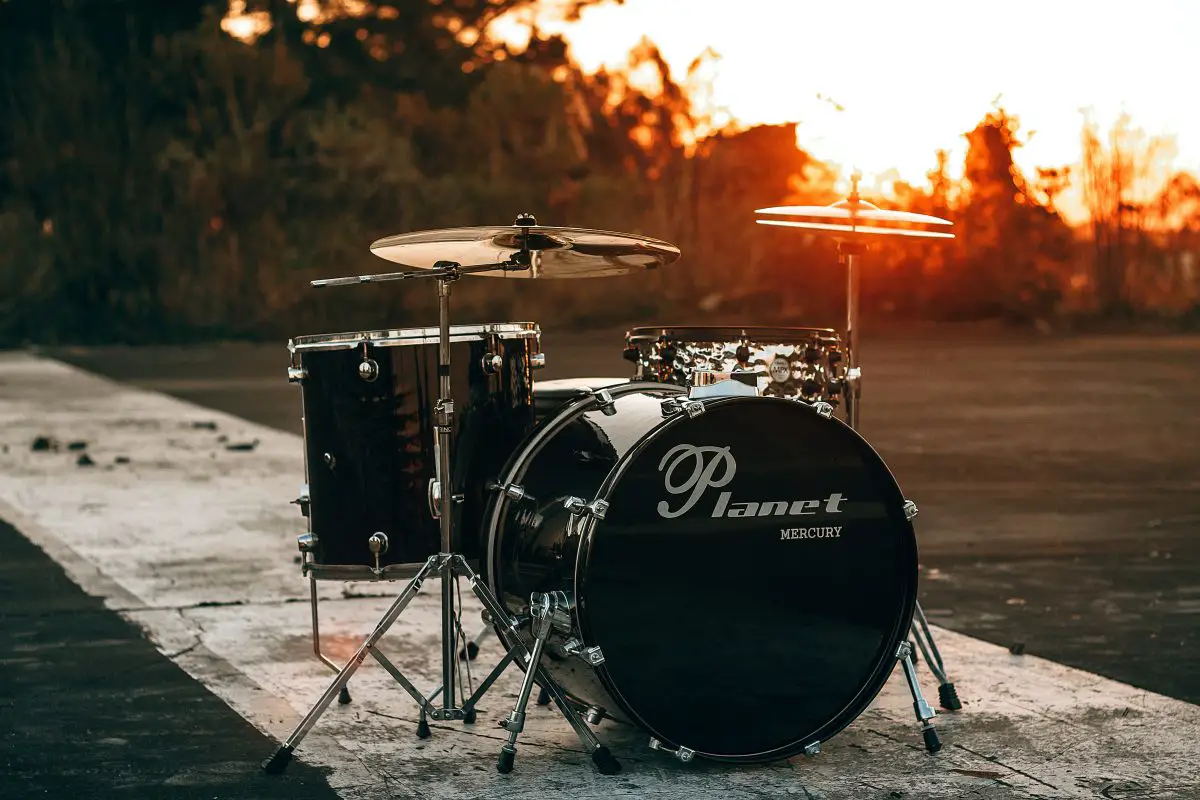Remember that one time you were at that concert, and you couldn’t help but dance to the infectious rhythm, all thanks to that fat, punchy sound hitting your chest? Yeah, that’s the kick drum. This blog post will help you master the art of the kick drum, from recognizing their sound to crafting your own, and even give some sweet tips for mixing ’em like a pro. Let’s drop the beat and uncover the secret sauce behind every head-nodding tune!
What is a kick drum? The kick drum, also known as the bass drum, is a low-frequency percussion instrument that provides the rhythmic foundation and pulse for music, often producing a deep, punchy, and powerful sound.
Why is the kick drum essential in music production?
The kick drum, my fellow music enthusiasts, is like the rhythmic glue holding everything together in a track. It’s the cornerstone of the groove, providing a steady foundation for other elements to build upon. Without a solid kick, the whole tune can feel like it’s missing something crucial, like an incomplete puzzle with a gaping hole in the middle.

To emphasize its significance, here’s an example. Consider the iconic tune “Billie Jean” by the legendary Michael Jackson. The kick drum in this track plays a vital role in creating that unmistakable groove, making you want to get up and dance. If we were to remove the kick, the entire rhythm would collapse, and the song would lose its magic.
I quickly added a kick drum, and the entire track suddenly came to life. It was like night and day!
Side note: I remember when I first got into music production and was fiddling around with my DAW, trying to make something that resembled a decent beat. I was so focused on the melodies and sound design that I completely overlooked the importance of the kick drum.
It wasn’t until a friend listened to my track and asked, “Dude, where’s the kick?” that I realized I was missing a crucial element. I added a kick drum, and the entire track suddenly came to life. It was like night and day! Seem so obvious now, but as a beginner, it wasn’t.
AKAI Professional MPK Mini MK3

AKAI Professional MPK Mini MK3
How can you identify a kick drum?
Easy, As we’ve mentioned before, the kick drum is responsible for that low-frequency, punchy sound that provides the rhythmic backbone of a track. So, what should you listen for when trying to recognize a kick drum?
You’ll want to tune into the low-frequency thump. This is the bassy component that hits you right in the chest when listening to a track. Additionally, there’s often a “click” or “snap” in the higher frequencies, which helps the kick cut through the mix and be heard clearly over other elements. So, just pay attention to the low-end thump and high-end click when identifying a kick drum.
To help you nail down the process, let’s analyze a famous example. Take “Seven Nation Army” by The White Stripes. The kick drum in this track is super prominent and easy to recognize. It has a deep, bass-heavy thud and a subtle higher-frequency click that makes it stand out in the mix.

What are the different types of kick drums?
Kick drums come in various flavors, each with its unique characteristics and vibe. Exploring these diverse types can help you find the perfect fit for your music and elevate your productions to new heights. Let’s dive into some of the most common types of kick drums you might come across:
1. Acoustic kick drums
These are the real deal, recorded from an actual drum kit. Acoustic kicks have a natural, organic sound that works well in genres like rock, jazz, and country. They often have a warm, full-bodied tone with plenty of dynamics. Check out “Everlong” by Foo Fighters for a prime example of an acoustic kick drum in action.
2. Electronic kick drums
Synthesized or sampled, electronic kick drums are the go-to choice for electronic music genres like house, techno, and drum & bass. They can range from deep, sub-heavy thumps to sharp, punchy attacks. A classic example of an electronic kick drum can be heard in Daft Punk’s “Around the World.”
3. 808 kick drums
Named after the legendary Roland TR-808 drum machine, 808 kicks are synonymous with hip-hop, trap, and other bass-heavy genres. These kicks typically have a deep, sustained sub-bass tone, often with a slight pitch bend. Kanye West’s “Love Lockdown” showcases a perfect example of an 808 kick drum.
4. Processed kick drums
These are kicks that have been heavily processed, manipulated, or layered with other sounds to create a unique and distinctive character. They can be used in various genres and are particularly popular in experimental and hybrid electronic music. Skrillex’s “Bangarang” features a heavily processed kick drum that packs a serious punch.
Here’s a handy table that you can use as a cheat sheet:
| Kick Drum Type | Genre(s) | Frequency Range | Attack | Sustain |
|---|---|---|---|---|
| Acoustic | Rock, Jazz, Country | 50-100 Hz | Medium to sharp | Short to medium |
| Electronic | House, Techno, Drum & Bass | 40-80 Hz | Sharp | Short |
| 808 | Hip-hop, Trap | 30-60 Hz | Soft to medium | Long |
| Processed | Experimental, Hybrid Electronic | Variable | Variable | Variable |
How do you create a kick drum from scratch?
Crafting a kick drum from scratch can be a rewarding experience, giving you total control over the sound and allowing you to make something that truly fits your track. Whether you’re using a synthesizer or a sampler, here’s a step-by-step guide to help you create a kick drum that’ll make your beats shine:
- Choose your weapon: Pick a synthesizer or sampler that you’re comfortable with. Many synths have dedicated drum sections or preset, while samplers can utilize one-shot samples or recorded sounds.
- Start with the low end: Begin by creating a simple sine wave with a low frequency, typically around 40-60 Hz. This will be the sub-bass foundation of your kick drum.
- Add some punch: To give your kick drum some attack, use an envelope to modulate the pitch of the sine wave. Set a fast decay and adjust the initial pitch to taste. This will create a punchy “click” at the beginning of the sound.
- Shape the envelope: Use an amplitude envelope with a fast attack, moderate decay, and a short release to shape the overall volume of the kick drum. This will ensure that the sound is tight and doesn’t overlap with other elements in your mix.
- Layer it up: To add more character and depth to your kick drum, try layering it with other samples or synthesized sounds. You can use a high-pass filter to remove the low frequencies from the additional layers so they don’t clash with the sub-bass.
- Process and refine: Finally, use effects like EQ, compression, and saturation to sculpt and enhance your kick drum sound. Tweak the settings until you achieve the desired tonal balance and impact.
Remember, practice makes perfect, so keep experimenting and honing your skills to create the ultimate kick drum for your tracks!
If you want even more tips and insights, watch this video called “Kick Drum Rule for Better Beats” from the Hack Music Theory YouTube channel.
Frequently asked questions (FAQ)
Do you still have questions about kick drums? Below are some of the most commonly asked questions.
What are the main factors to consider when choosing a kick drum?
When selecting a kick drum, consider the genre and style of your music, the desired frequency range, and the type of attack and sustain you want. Additionally, think about whether you want to synthesize your kick drum, use samples, or record an acoustic kick drum.
How can I improve the mix of my kick drum?
To make your kick drum sit well in the mix, use EQ to carve out space for it in the frequency spectrum, sidechain it with other low-frequency elements (such as the bass), and apply compression to control its dynamics.
Also, experiment with layering and processing techniques to give your kick drum its own unique character.
Can I use multiple kick drum types in a single track?
Yes, you can use multiple kick drum types in a single track, as long as they complement each other and don’t clash in the mix. Make sure to carefully EQ and balance the levels of each kick drum to avoid muddiness and phase issues.
Conclusion
Well, folks, it’s time to kick it into high gear and wrap up this rhythmic journey! We’ve explored the wonderful world of kick drums, from their types and characteristics to how you can create one from scratch. So, are you ready to give your tracks a “kick” in the right direction?
So, do you have a favorite type of kick drum? And did I cover everything you wanted to know? Let me know in the comments section below. I read and reply to every comment. If you found this article helpful, share it with a friend, and check out my full blog for more tips and tricks on kick drums. Thanks for reading, and keep on groovin’!
Key takeaways
This article covered the ins and outs of kick drums in music production. Here are some key takeaways:
- Kick drums are an essential element in music production, providing rhythm and energy to a track.
- There are various types of kick drums, including acoustic, electronic, 808, and processed.
- Creating a kick drum from scratch involves choosing a synthesizer or sampler, designing the low-end, adding punch, shaping the envelope, and processing the sound.
- Mixing and layering kick drums can be challenging, but proper EQ, compression, and sidechain techniques can help achieve a balanced mix.
- Different kick drum types have their advantages and disadvantages, which can be considered when selecting the right kick drum for your project.















